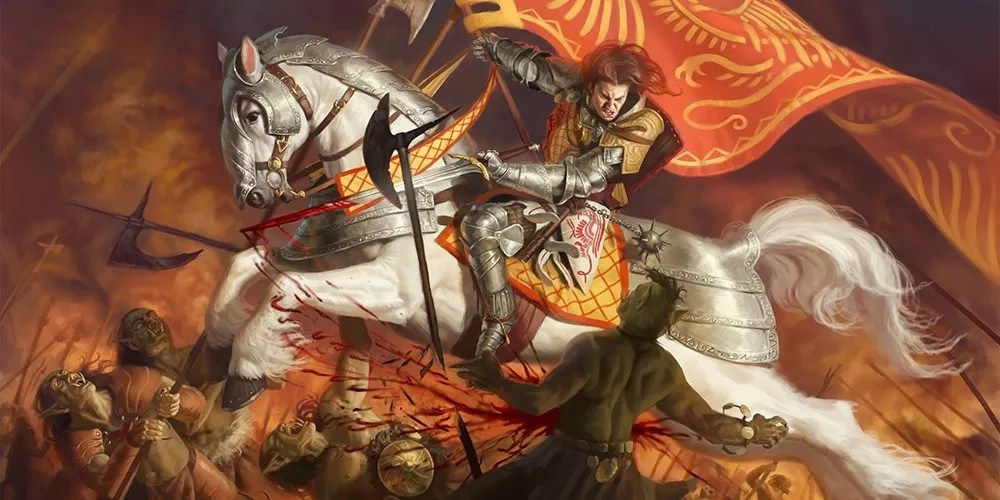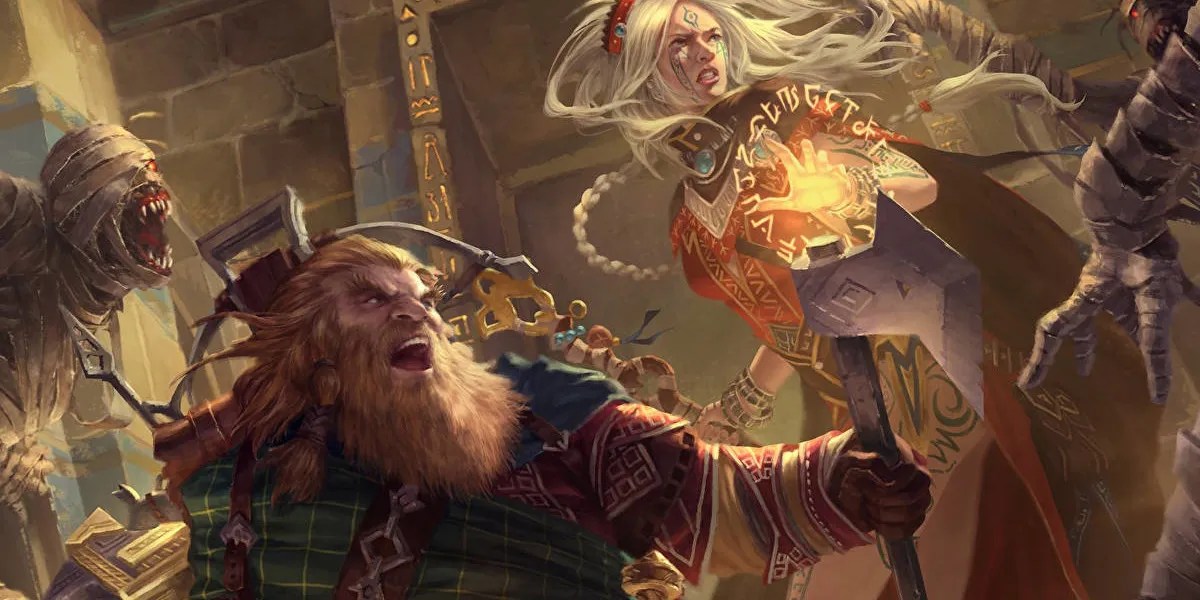Isometric, stand-alone, turn-based fantasy video games have been suffering a bit of a dry spell until a few years ago. Most developers had gone the way of MMOs or three-dimensional, first-person POVs, Owlcat Games saw things a bit differently when they madePathfinder: Wrath of the Righteous. They not only kept the old-school camera angle but also used the intriguing world of thePathfinderuniverse as the framework for their turn-based adventure games.
Pathfinderhas a lot more variety than its competitors when it comes to classes, with 25 to choose from, and that doesn’t include advanced Prestige classes or multi-class creations. For those who are new toPathfinder, or just want to play a low-maintenance character while enjoying the story, there are several that are ideal for beginners.

Updated July 09, 2025, by Kristy Ambrose:The makers ofPathfinderrecognize that the choices of classes during initial character creation are intimidating. That’s why the character creation screen helps players by rating the classes that require more micromanagement than others; 5 is the most difficult, and 1 is the easiest. The customization process for each class has a level of detail related to both the main story and whatever Mythic Path or compelling backstory the individual player decides to craft. There’s also the option of the automatic recommended build if beginners need a head start.
16Barbarian
Special Abilities: Rage Power, Damage Reduction, Danger Sense, Fast Movement
Simple is as simple does when it comes toPathfinder: Wrath of the Righteousclasses. A melee class with a limited choice when it comes to armor and certain intellectual pursuits, Barbarian is one of the best classes to start any RPG.
Players can customize their Barbarian to have skills with both distance and melee weapons, much like any martial class. Although they might be able to learn a cantrip or two depending on the exact build they, can’t cast spells or use most scrolls. Players interested in a straightforward hack-and-slash experience would enjoy playing a Barbarian.

15Cavalier
Special Abilities: Challenge, Banner, Cavalier’s Charge
It sounds like the name for a swashbuckling-type class, and it is when it comes to weapons and gear, but players also get to choose an animal companion. Naturally, this is often a horse or another ridable animal. Previously, some possibilities weren’t visible to the Cavaliers, but that was fixed in a patch.

The Cavalier can be seen charging into battle waving their standard, so this is an ideal starter class for those planning to lead the party. When it comes to mobility, this is one ofPathfinder: Wrath of the Righteous’best classes. Characters also get a variety of martial skills, including both weapons and armor along with extra perks like Tactician as a bonus Feat.
14Bard
Special Abilities: Bardic Knowledge, Jack Of All Trades, Inspire Courage
Bards have surged in popularity among RPG gamers thanks to their wide variety of abilities. Players can make this class more complicated if they build them to fill more than one party role, but a beginner can always keep it simple as a fighting or casting class.
The subclasses include Bards that are more like Rangers, Druids, or even Sorcerers, which is contrary to the reputation of Bards as strictly healers or support classes. No matter the choice, all Bards still have access to the same handy abilities, like Bardic Knowledge and Detect Magic.

13Cleric
Special Abilities: Channel Energy, Domain/Diety Selection
One of the most versatile classes inPathfinder: Wrath of the Righteous,a Cleric can fill virtually every party roleand has some of the most useful spells at hand. Healing incantations are only the tip of that iceberg. Clerics can also cast Restoration spells, protection from energy and alignment spells, and channel Negative and Positive Energy.
The foundation for a Cleric build starts with choosing a moral alignment and a deity, which often determines whether this Cleric will be a healer or a ranged DPS. One Archetype allows for equal powers in each, but it also requires a neutral alignment.
![]()
12Fighter
Special Abilities: Bravery, Bonus Combat Feat, Weapon/Armor Mastery
When Gary Gygax first started what would become modern D&D, he included three classes, and this was one of them. The legacy class that appears in every RPG, the Fighter can be as simple or as complex as the player wants.
Fighters are highly customizable. Players can choose between Archetypes, abilities for both combat and survival, and other useful features. Beginners who want to play a martial class but are unsure about their character’s specific progression would do well to choose a Fighter, because they learn a new skill at every level. Their primary abilities are Dexterity or Strength. They can take on the party’s defense with a sword and shield, or dual-wield and act as melee or ranged DPS.

11Inquisitor
Special Abilities: Judgement, Exploit Weakness, Orisons
The Inquisitor can be compared to a Paladin when it comes to faith and melee damage, but the similarities stop there. Inquisitors are dedicated to their deity, which means they aren’t tied to a Lawful Good alignment. They are fanatics, often working to pursue those who oppose their god. They can use torture, murder, and pet monsters to do it.
The fairly simple RP background is a good start for new players. What makes this class one of the easier ones to play is the focus on damage, whether it’s ranged or melee, plus the choice of a few simple spells that can be used for healing the party or harming its enemies.
![]()
10Sorcerer
Special Abilities: Bloodline, Sorcerer’s Bonus Feat
If any class has a reputation for being overpowered,it’s always the Sorcerer. That’s a nice incentive for players of any experience level, but the Sorcerer is easier to play overall because they know spells by instinct as opposed to study and memorization.
This feature makes them easier to manage and organize compared to other spellcasting classes. What exactly they can do is connected to their Bloodline and their choice of subclass, which offers some interesting possibilities for both roleplay and combat.

9Skald
Special Abilities: Bardic Knowledge, Skald Talent, Inspired Rage
The Skald is a class that players see in RPGs less often, but it’s a fairly popular combination class that still appears in a variety of tabletop and video games. This class takes certain features of the Bard class, such as the Charisma spellcasting modifier and the crowd-control abilities, and the Barbarian class, which includes features like Rage and a wide variety of melee weapons.
The lore is based on the musicians of Norse and Scottish lore who would play pipes or horns on the field of battle. What makes them more complicated than other beginner’s classes is the variety of party roles and backstory possibilities inherent in every Skald build. The player can include details and features to make them more like a Bard, with a focus on spellcasting and healing, or a Barbarian, with the powers of Rage and physical weapon talents.

8Monk
Special Abilities: Ki Power, Flurry Of Blows, Monk Bonus Feat
Players shouldn’t worry about fretting over weapon and armor choices with this class. They’ll have very few, but that’s the advantage. New players will also appreciate a nice mix of abilities related to both athletics and perceptive skills.
The Monk class ofPathfinder: Wrath of the Righteoushas more options when it comes to weapons than its counterparts in other games. They can access handaxes, shurikens, daggers, and several others. It’s slightly limited when it comes to alignment choices, but there are RP choices related to the Monk’s deity or background to make it more interesting.

7Oracle
Special Abilities: Revelation, Oracle’s Curse, Mystery
The Oracle is often compared to a Cleric in thePathfinderuniverse when it comes to the capacity for healing. Unlike the Cleric, however, the Oracle is more focused on their magical abilities. They don’t have to be beneficial ones, and Oracles can be Atheists.
During the character creation process,Oracles have to choose from Cure Spellsand Inflict Spells. A player could build a damage dealer that uses Negative Energy on enemies whole using their smaller library of healing spells for party support.
The Oracle class is fairly complex when it comes to mechanics and RP. Some players might not like the amount of work when it comes to creating a character with a unique build, but others will appreciate the detail. Oracles not only choose a Background like other characters, but also an inherent Curse, an Ancestral Mystery, and a Revelation, which is an extra ability related to their previous choices for spells.